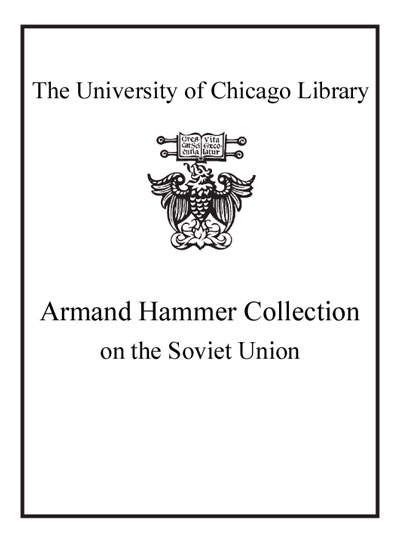Creating capitalism : transitions and growth in post-Soviet Europe /
Saved in:
| Author / Creator: | Dillon, Patricia, 1937- |
|---|---|
| Imprint: | Cheltenham, UK ; Northampton, MA : Edward Elgar, c2002. |
| Description: | xiv, 328 p. : ill., 1 map ; 26 cm. |
| Language: | English |
| Subject: | |
| Format: | Print Book |
| URL for this record: | http://pi.lib.uchicago.edu/1001/cat/bib/4811805 |
Table of Contents:
- List of figures
- List of tables
- Preface
- Part I. Theoretical Foundations
- 1. The withering away of communism
- The end of an idea
- Economic analysis of institutional change
- The book's objectives: from models to reality
- Two historic views of the industrial revolution
- Lessons from the collapse of the Soviet Union
- The new world order
- 2. The political economy of reform
- New political and economic challenges
- Political impediments to economic reform
- Transition to what?
- Problems in political economy
- 3. Why private markets work
- Why these reforms?
- Price liberalization
- Property privatization
- Macroeconomic stabilization
- Industry restructuring and deregulation
- Trade liberalization
- An active role for government
- Failure: markets versus plans
- 4. Growth models for assessing reforms
- Reforms lead to growth
- Growth modelling: description, purposes and limitations
- The structure of growth models
- The workings and outcomes of growth models
- Saving: the essential ingredient
- 5. How each reform promotes growth
- The economic channels of reform
- Price liberalization
- Property privatization
- Macroeconomic stabilization
- Industry restructuring and deregulation
- Trade liberalization
- Summary: reforms and growth
- 6. Challenges facing reformers
- Why a political model is important
- Interaction of political and economic systems
- A model of elections and politics
- Common problems facing reformers
- Unique local conditions
- Part II. Country Chapters
- 7. Bulgaria: impatient but indecisive
- History before communism
- History under communism
- Political transition, economic changes
- Economic reforms: three steps forward and two back
- Conclusions and recommendations
- 8. Are the Czechs capitalist superstars?
- History before communism
- History under Soviet rule
- The Velvet Revolution
- Economic reforms
- Economic performance and the future
- 9. Estonia is headed West
- Estonia before the Soviets
- History under Soviet rule
- Political transition and the birth of Estonian reforms
- Attitudes to reforms since independence
- Economic reforms: how complete, how successful?
- Sustainability of reforms and the future
- 10. A taste of Hungarian goulash
- History before communism
- History under communism
- The political transition
- A question of political will
- Conclusions and outlook
- 11. Can Russia make it?
- History before communism
- History under communism
- The political transition
- Economic reforms
- Economic performance
- Conclusions and recommendations
- 12. Will the Slovaks stay the course?
- Slovakia before the Soviets: years of foreign domination
- The Soviet years
- The Velvet Revolution and Divorce, 1988-1993
- Economic reforms
- The future looks better than the past
- Conclusions and questions
- 13. The long and winding road
- Part III. Appendices
- Appendix A.. Reforms in growth models
- 1.. The corn economy
- 2.. The public fisc and private budgets
- 3.. Endogenous technological change and technology transfer
- 4.. Technology transfer
- Appendix B.. Political influence, economic performance and reform efforts: an econometric analysis of six newly independent countries, 1989-1999
- 1.. Reforms and the growth model
- 2.. Voting behavior and the growth model
- 3.. Simultaneous equation system
- 4.. Allowing for not voting pocketbook issues
- 5.. Econometric results and the data
- 6.. Votes, reforms and performance: dummy variable models
- 7.. Votes, reforms and performance: percentage of votes and reform indexes
- 8.. Conclusions and recommendations
- Bibliography
- Index

